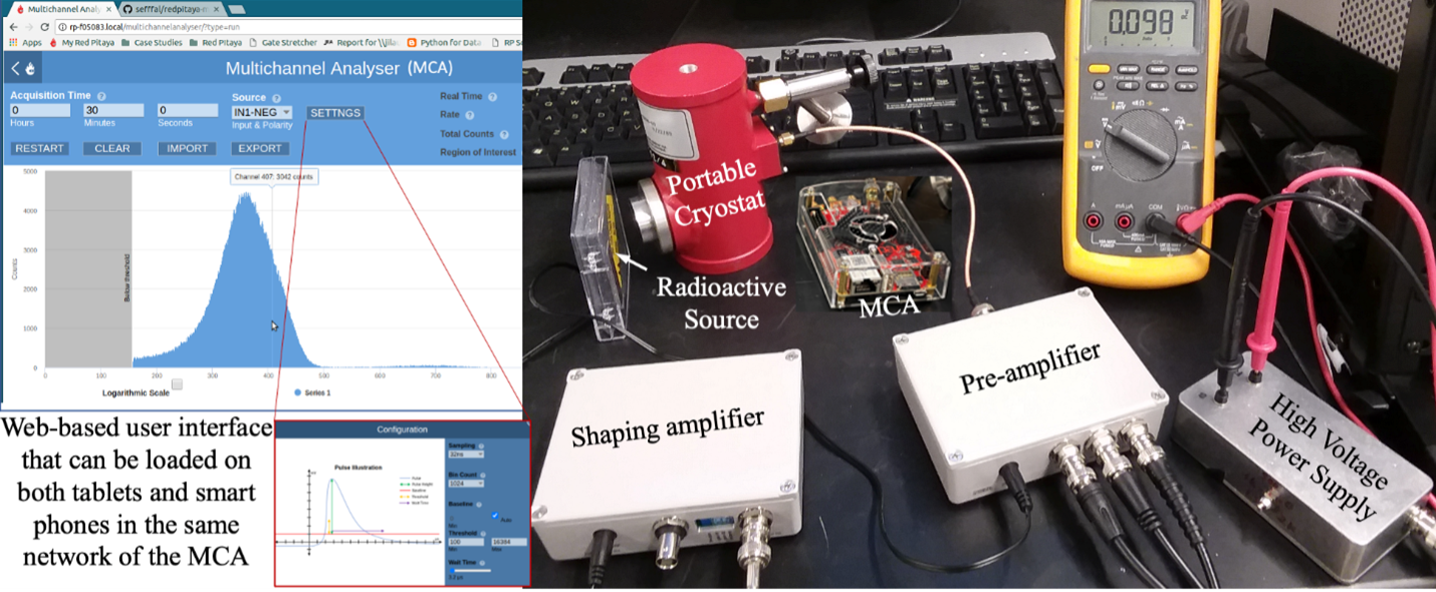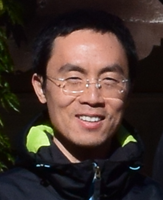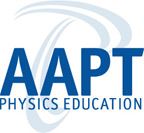- Home
- What We Do
- Laboratory Immersions
- Immersions 2023
- Imm2023USD_GEDetectors
University of South Dakota, Vermillion, SD
Radiation Detection with HPGe Detectors
Dates: Aug. 10, 2023 to Aug. 12, 2023
Number of setups available: 2
Maximum number of participants: 4
------------------------------------------------------------------------------------------------------------------------------------------
 High-purity germanium (HPGe) detectors are among the most precise radiation detectors in the world. They feature more than 10 times better energy resolution of typical NaI(Tl) scintillators, and are widely used in nuclear physics research, space science, medical imaging, and homeland security projects.
High-purity germanium (HPGe) detectors are among the most precise radiation detectors in the world. They feature more than 10 times better energy resolution of typical NaI(Tl) scintillators, and are widely used in nuclear physics research, space science, medical imaging, and homeland security projects.
However, a HPGe detector needs to be operated at around liquid nitrogen temperature (77 K, or -321 F). Multi-stage readout electronics are needed to collect faint signals from the detector. It demands rich experience in nuclear electronics and cryogenic operation of a user to function properly. Besides, HPGe crystals are among the purest materials in the world and a HPGe detector with a similar mass of a NaI(Tl) scintillator is more than 10 times more expensive. All these aspects keep the HPGe detector system away from most of undergraduate physics labs.
A modularized HPGe detector system has been developed at the University of South Dakota as shown in the figure above to solve most of the problems mentioned above. It consists of a small planar HPGe detector (~3cm3) mounted in a coffee-mug sized cryostat, a pre-amplifer box, a shaping-amplifier box and a Red Pitaya multi-channel analyser (MCA) that can broadcast the recorded energy spectrum through a wireless network. The cost of the system is listed below:
- Cryostat from ebay: $100~300
- Modification of the cryostat: $100
- Pre-amp: $50
- Pre-amp board and box: $110
- Shaping amplifier: $50
- Shaping amplifier board and box: $110
- Baseline restoring chip: $110
- Digitizer: $500
- High voltage chip: $400
- Mini planar HPGe detectors: $2,000~$5,000 (depending on size)
It is still an expensive investment in an undergraduate lab, but it brings the HPGe detector systems down to a more accessible price range.
In this three-day Immersion, we will learn how to use this system to detect radiation from common sources and ambient background.
Basic theory of radiation detection
Working principle of HPGe detectors
Day 1, afternoon:
Pump and cool the HPGe cryostat
Test electronics stage by stage
Day 2, morning:
Apply high voltage, debug the system with an oscilloscope
Learn the operation of an MCA
Day 2, afternoon:
Take spectrum data with typical radiation sources on top of background spectrum
Learn how to retrieve energy resolution and perform energy calibration
Day 3, morning:
Take data with an unknown source to identify radioactive material
Day 3, afternoon:
Tour to HPGe crystal growth and detector development facility at the University of South Dakota.
Buffer time if needed
Participants do not need to take any material except for their personal laptops.
Compared to the other Immersion, “Radiation detection with CsI + SiPM”, from the same mentor, this one demands more background knowledge on nuclear electronics and cryogenic operations from a participant.
 Dr. Jing Liu is an associate professor at the University of South Dakota (USD) with 20 years of experience on experimental particle physics, ranging from electron-positron collider to neutrino and dark matter detections. He is particularly interested in the development of novel radiation detector systems for neutrino and dark matter detections. His team was supported by the Office of Integrative Activities, NSF, to learn HPGe detector fabrication technology from the Lawrence Berkeley National Laboratory. HPGe crystals can be grown locally at USD. Supported by the Office Of Internatl Science &Engineering, NSF, Liu helped organize three summer schools in HPGe technology (China, 2018, Germany, 2019, and Canada, 2022), and his series of lectures on HPGe foundamentals were well received.
Dr. Jing Liu is an associate professor at the University of South Dakota (USD) with 20 years of experience on experimental particle physics, ranging from electron-positron collider to neutrino and dark matter detections. He is particularly interested in the development of novel radiation detector systems for neutrino and dark matter detections. His team was supported by the Office of Integrative Activities, NSF, to learn HPGe detector fabrication technology from the Lawrence Berkeley National Laboratory. HPGe crystals can be grown locally at USD. Supported by the Office Of Internatl Science &Engineering, NSF, Liu helped organize three summer schools in HPGe technology (China, 2018, Germany, 2019, and Canada, 2022), and his series of lectures on HPGe foundamentals were well received.
 Kyler Kooi is a Ph.D. candidate at the University of South Dakota (USD). He has worked in the HPGe crystal purification and growth facility at USD since 2014. He learned HPGe detector fabrication as a member of Dr. Liu’s team. He is the first student who can handle the whole HPGe detector production chain, from crystal purification, growth, till detector fabrication and commissioning.
Kyler Kooi is a Ph.D. candidate at the University of South Dakota (USD). He has worked in the HPGe crystal purification and growth facility at USD since 2014. He learned HPGe detector fabrication as a member of Dr. Liu’s team. He is the first student who can handle the whole HPGe detector production chain, from crystal purification, growth, till detector fabrication and commissioning.





